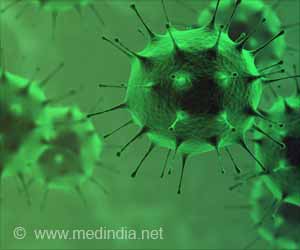US-based Bill and Melinda Gates Foundation, will work for the elimination of kala-azar, a deadly disease caused by a parasite transmitted by the tiny sand fly, in Bihar.
Three international agencies, including the US-based Bill and Melinda Gates Foundation, will work for the elimination of kala-azar, a deadly disease caused by a parasite transmitted by the tiny sand fly, in Bihar.
C.P. Thakur, a former central minister and chairman of the Kala-Azar Task Force in Bihar, said that the Bill and Melinda Gates Foundation, the California -based Institute for One World Health and Switzerland-based Medecins Sans Frontieres would work for the elimination of kala-azar in Bihar.The agencies will launch mass awareness campaigns and provide latest medicines and treatment for those suffering from the disease. "All three international agencies will start their projects soon to check, control and eradicate kala-azar," Thakur told IANS.
He said that the agencies had decided to focus on the flood-prone districts of north Bihar, which are the most affected by the disease. The Gates Foundation and One World Health will jointly work in the districts of East Champaran, Muzaffarpur, Samastipur and Darbhanga. Medecins Sans Frontieres will work alone in Vaishali district.
The Gates Foundation's senior programme officer Thomas P. Kanyok and One World Health programme director Helen Matzger led a delegation of experts from the agencies who met Chief Minister Nitish Kumar Tuesday and informed him about their keenness to work in the state.
"Nitish Kumar assured all possible help to them," sources in the chief minister's office said. Thakur said over 100,000 people, mostly the poor, are suffering from the disease and hundreds have already died in the last one year. Currently, 31 of the 38 districts in Bihar are in the grip of the disease.
The sand fly that transmits the disease multiplies in the cow dung villagers use liberally to plaster their shanties or as cow dung cakes for fuel. The flies survive on the sap in banana and bamboo groves and the decomposed cow dung heaps. They make their home in the straw thatches of houses.
Advertisement
Thakur said that continued spraying of insecticides for at least five years in a phased manner and supervised administration of Amphotericin B could eliminate the disease.
Kala-azar, medically known as Visceral Leishmaniasis, is also known as the poor man's disease because it affects the poorest of the poor. Bihar last faced a kala-azar epidemic in 1991 when 250,000 cases were reported. In 2000, the numbers were low but started rising from 2003.
The disease occurs in 62 countries, primarily in the developing world. Around 90 percent of all cases around the world are found in India, Bangladesh, Nepal, Sudan and northeast Brazil. Experts say over 60 percent of the cases in India are in Bihar alone.
Source-IANS
LIN /J






